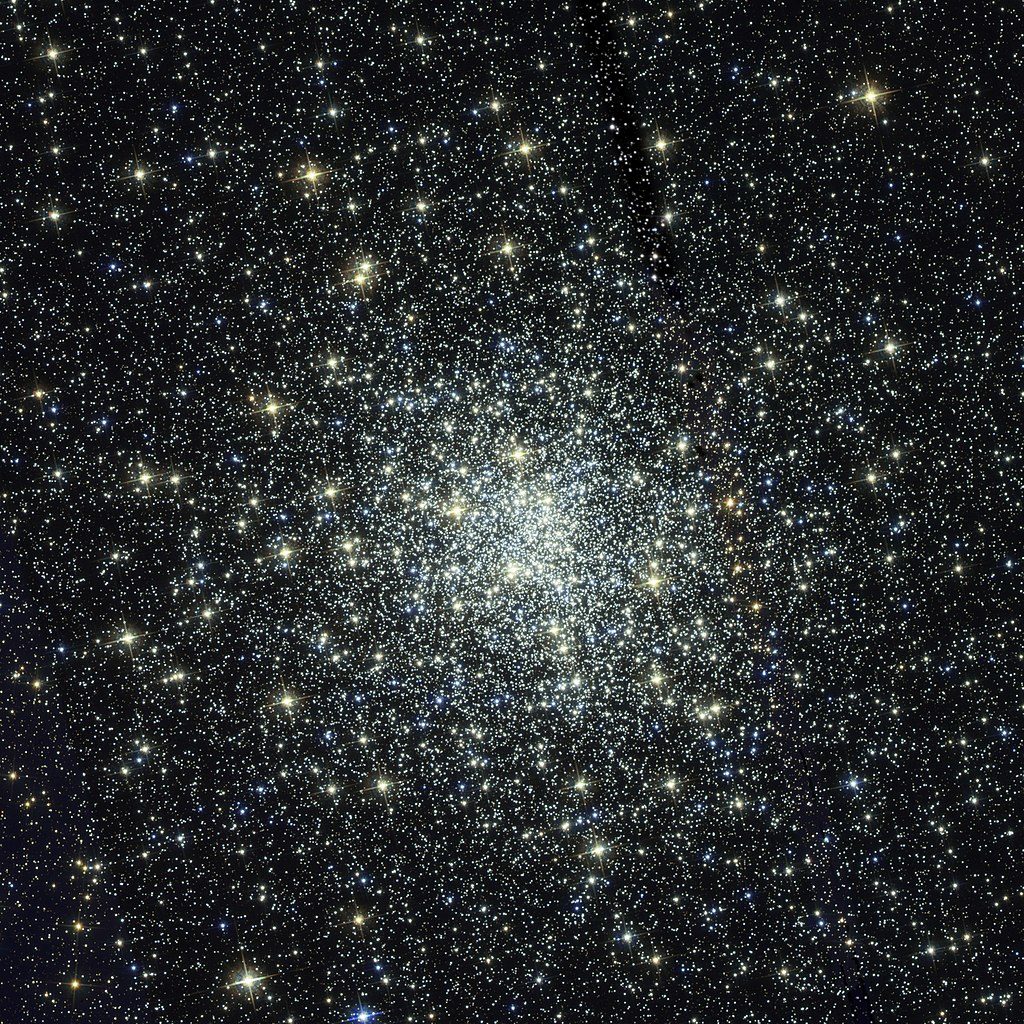August is a fantastic time of year where the night skies are rich with nebulae and star clusters.
Astronomical darkness starts a little earlier this month, from 12:44am in Scotland, 11.50pm in mid latitudes of the UK and 11:45pm in the south. There are some wonderful objects to discover, including a spectacular meteor shower and a pretty conjunction of stars, planets and the Moon.
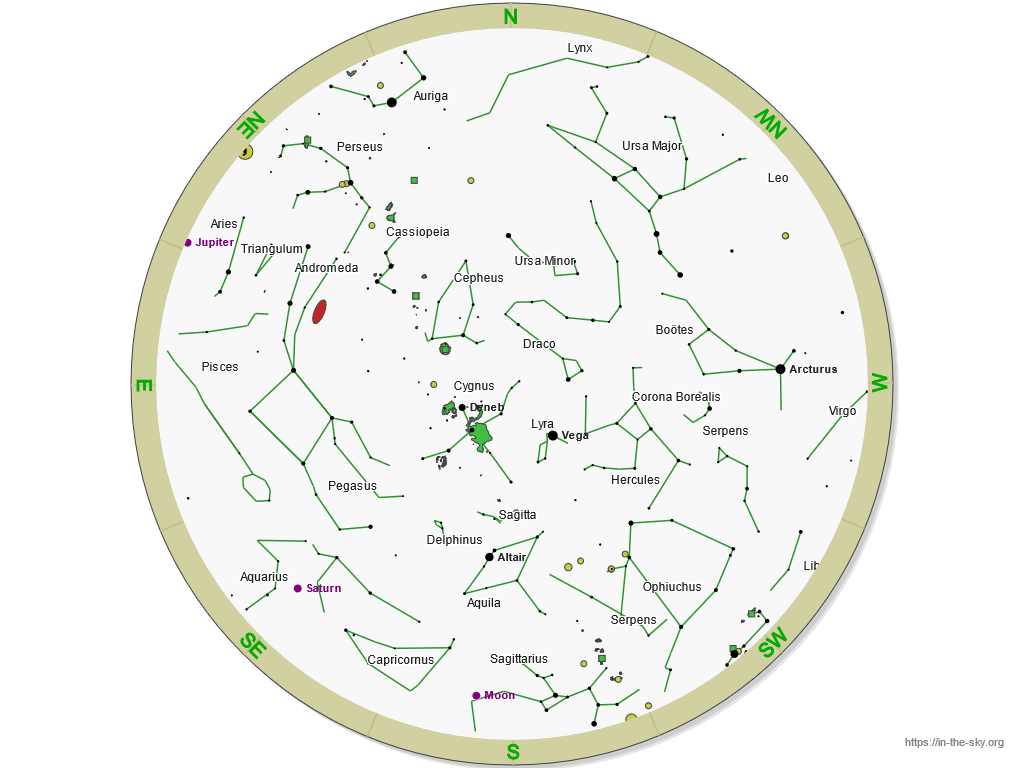
August Constellations
The best time of night to start stargazing is around midnight; see the Milky Way rise to the right of the Constellation of Sagittarius, a region rich in deep sky objects, meander through the heart of the Aquila and veer left of Lyra. Look for the Square of Pegasus in the east and Bootes setting into the west, the bright star Arcturus identifying the location of this kite-shaped asterism.
You can download the printable constellation map from here (credit: Dominic Ford, author in-the-sky.org).
The New Moon falls in 16th August and the Full Moon occurs twice: on the 1st and 31st August.
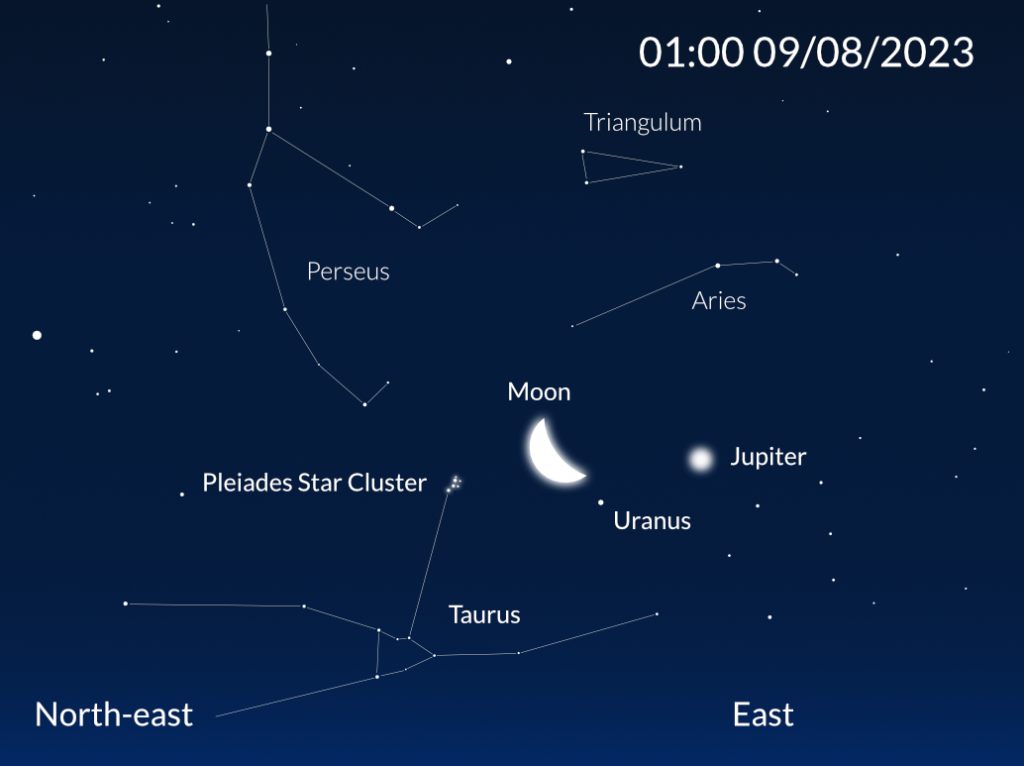
Conjunction of Planets, the Moon and a Star Cluster
On 9th August, there will be an early morning conjunction of Jupiter, the Moon and the Pleiades Star Cluster. Look to the east after midnight and see the Moon and Jupiter rise. To the left of the Moon, try and spot the Pleiades Star Cluster. If you use your binoculars to look at the Moon, the bright star lying at the 5 o’ clock position is the planet Uranus.
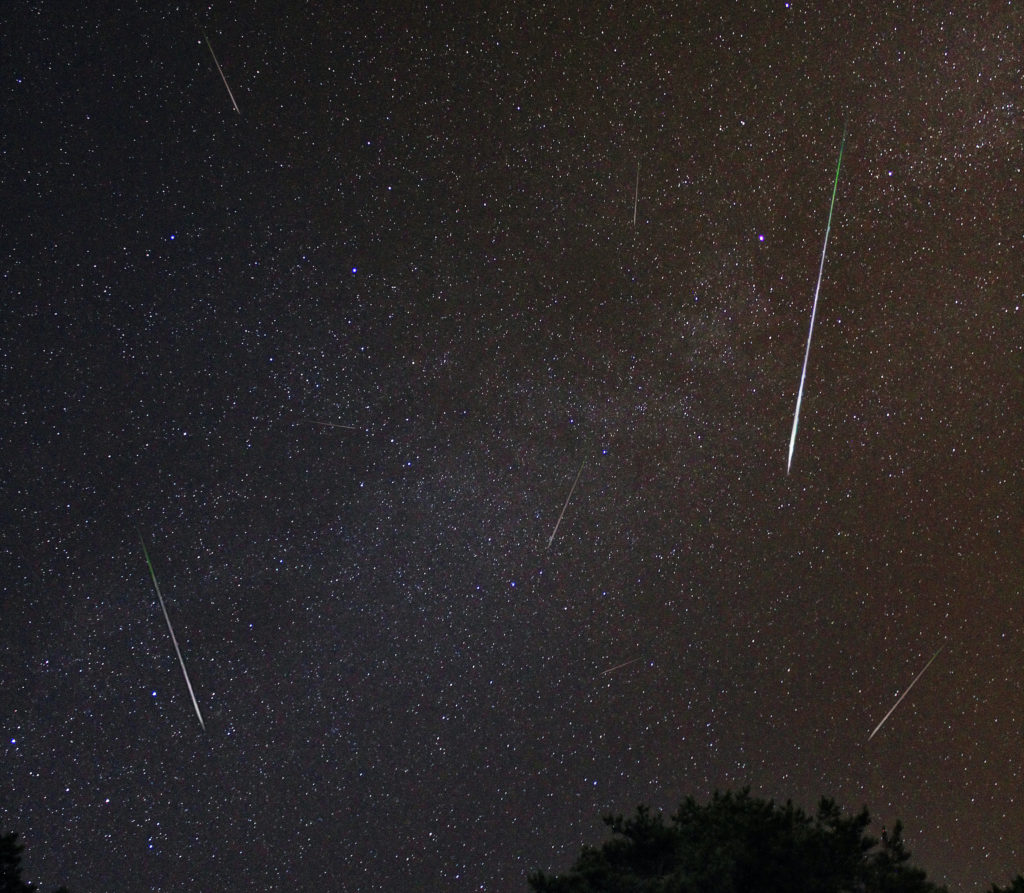
Perseid Meteor Shower
The Perseid meteor shower is expected to be a great one this year, peaking on the late night of 12th August and into the early morning of 13th August. The waxing crescent Moon will set at around 7.25pm, which will provide the perfect dark skies to watch the most spectacular meteor shower of the year.
Radiating from the constellation of Perseus, you don’t have to look in that direction as the ‘shooting stars’ appear anywhere in the sky. As these dust particles, thought to be the debris of Comet Swift/Tuttle hit our atmosphere, the speed of the object plus the friction with our atmosphere causes the meteoroids to heat up and catch fire, leaving persistent trains and even a smoky tail. It is so easy to watch this – just wrap up warm, bring a drink, lie on a blanket, look up and enjoy! It is believed that 150 meteors per hour during the peak time may be seen.
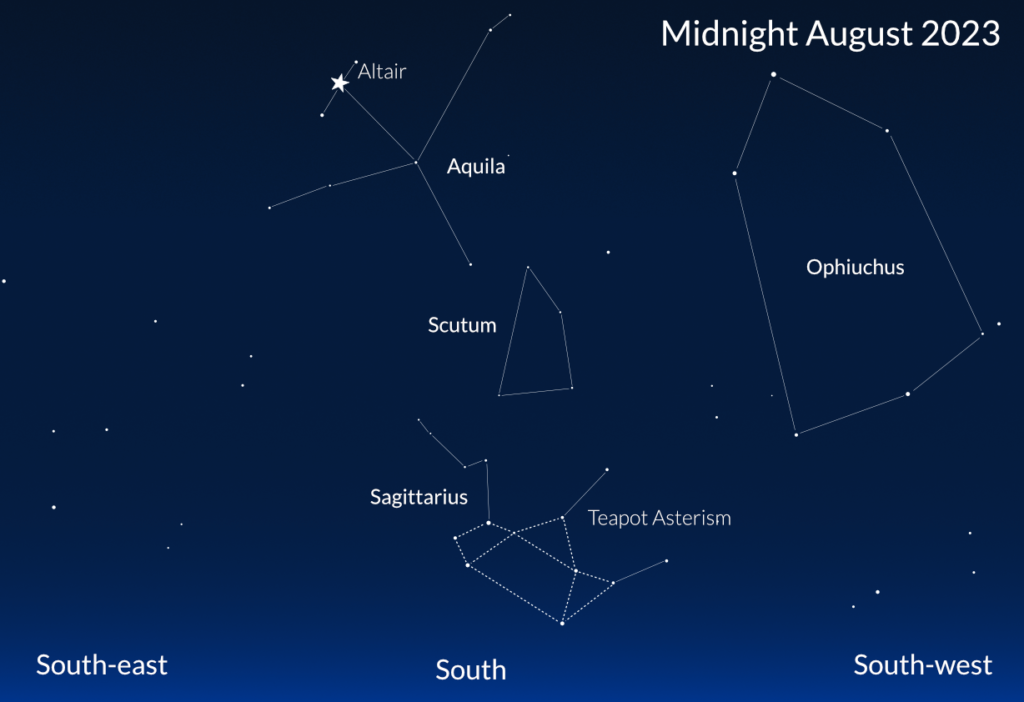
Riches in Sagittarius
August is the best month to study some stunning deep space objects in the constellation of Sagittarius. You will need access to a low horizon to see the constellation, which looks like a celestial teapot. You can use your binoculars to view the wealth of stars in the field of view and faint smudges, some of which are nebulae, open clusters and globular clusters. We have selected some of the best objects to discover below:

Lagoon Nebula
RA 18h 3m 37s | Dec -24° 23′ 12″
This emission nebula, lying 5200 light years away is also known as Messier 8 and is one of many stunning features in the constellation of Sagittarius. Discovered by Italian astronomer Giovanni Battista Hodierna in 1654, the then dark skies would have made it easily discoverable but he added this to his list of objects to avoid, as he was a comet hunter. In the heart of this nebula lies NGC 6530, a star cluster; these stars give off huge amounts of radiation which lights up the gas and creates the nebula’s structure.
The nebula can be spotted through binoculars as a fuzzy patch of light and through small telescopes, an oval structure can be determined.
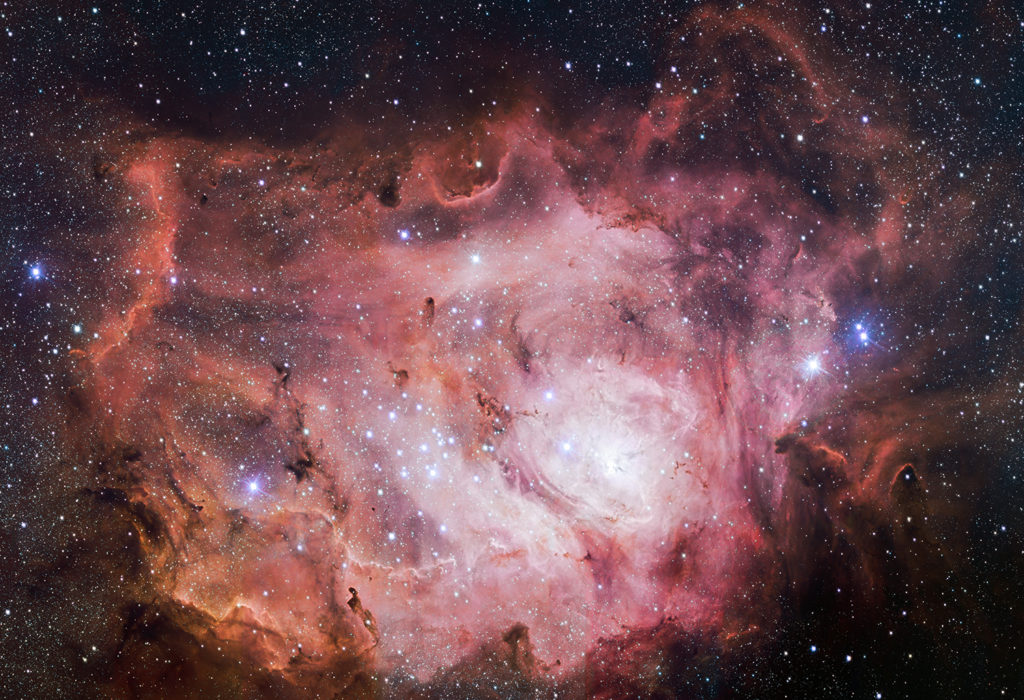
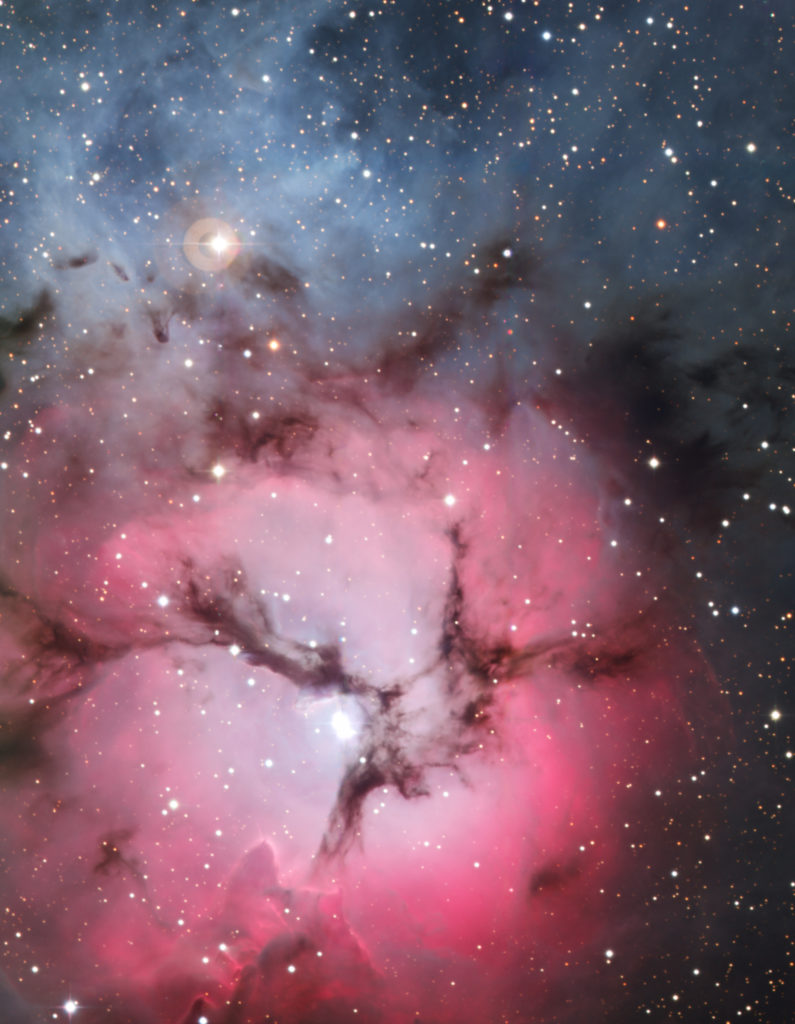
Trifid Nebula
RA 18h 2m 23s | Dec -23° 1′ 48″
This stunning nebula was discovered by Charles Messier in 1764 and is located 9000 light years away. Also known as Messier 20, it is an interesting combination an open star cluster, a reflection and an emission nebula. Like its neighbour, the Lagoon Nebula, the open star cluster generates ultraviolet radiation, which lights up the gas. The shape of the nebula, which can be seen from photographs, has a three-lobed structure.
It can be seen through binoculars and small telescopes but through larger telescopes in dark skies you may start to see structural details.
Messier 23
RA 17h 56.8m | Dec -19° 01´
Try and find this open cluster of stars which can be found with binoculars in a rural sky. Situated 2050 light years away, it contains around 176 stars. It is an object that is better seen through binoculars or a small telescope. Even if it is not that impressive visually, you will have discovered one of the oldest open clusters in the Milky Way Galaxy.
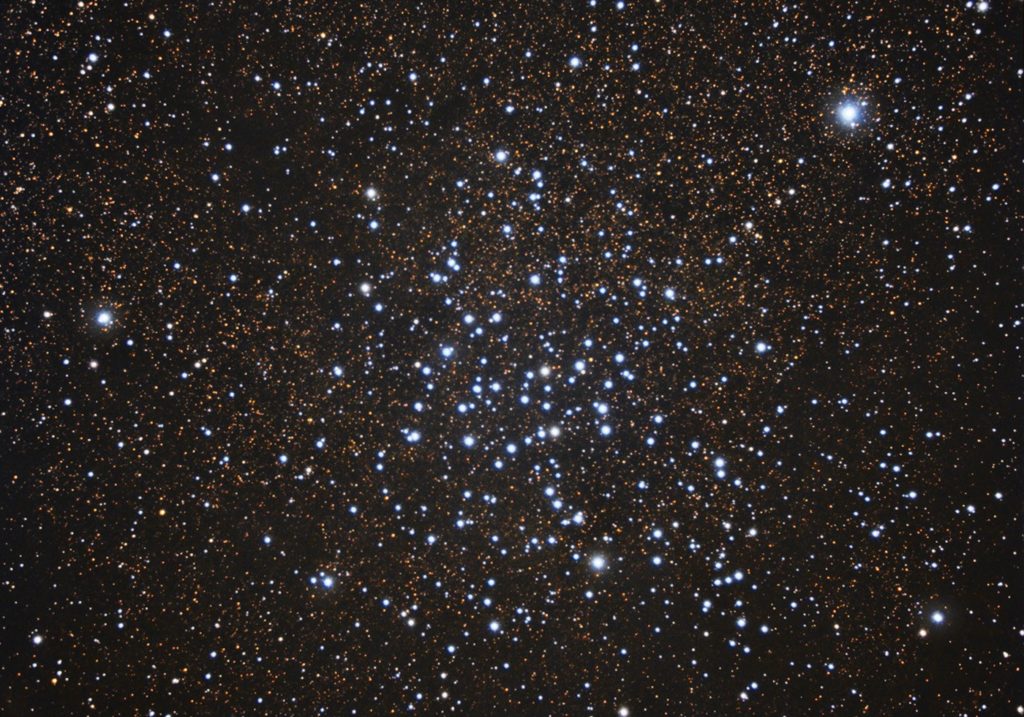

Messier 22
RA: 18h 36m 24m 21s | Dec: -23° 54′ 9.73″
This little-known globular cluster is one of the brightest ones in the night sky. It’s relatively low position in the sky makes it difficult for those who live surrounded by buildings or hills so it is worth visiting a dark sky area with a good horizon. It was one of the first globular clusters to be discovered by an astronomer named Abraham Ihle in 1665. Situated 10,600 light years away, it can be resolved in a small telescope – from 6 inches of aperture. An 8-inch telescope will reveal hundreds of stars. Despite it being a bright object, visually, it cannot be compared to the brightness of the Great Cluster in Hercules (M13) as it lies low on the horizon where the atmosphere is thicker than higher up in the sky, which can obscure what you are trying to see.
Messier 28
RA: 18h 24m 32.89s
Dec: –24° 52′ 11.4″
A third globular cluster that is worth hunting for is Messier 28 that lies 17,900 light years away. Binoculars will reveal a faint patch of light in a dark rural sky and stars are resolved through telescopes.
